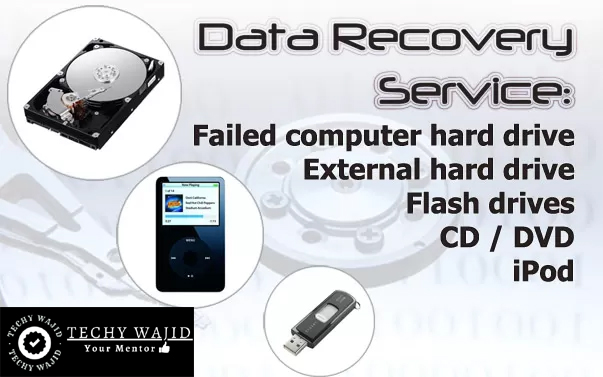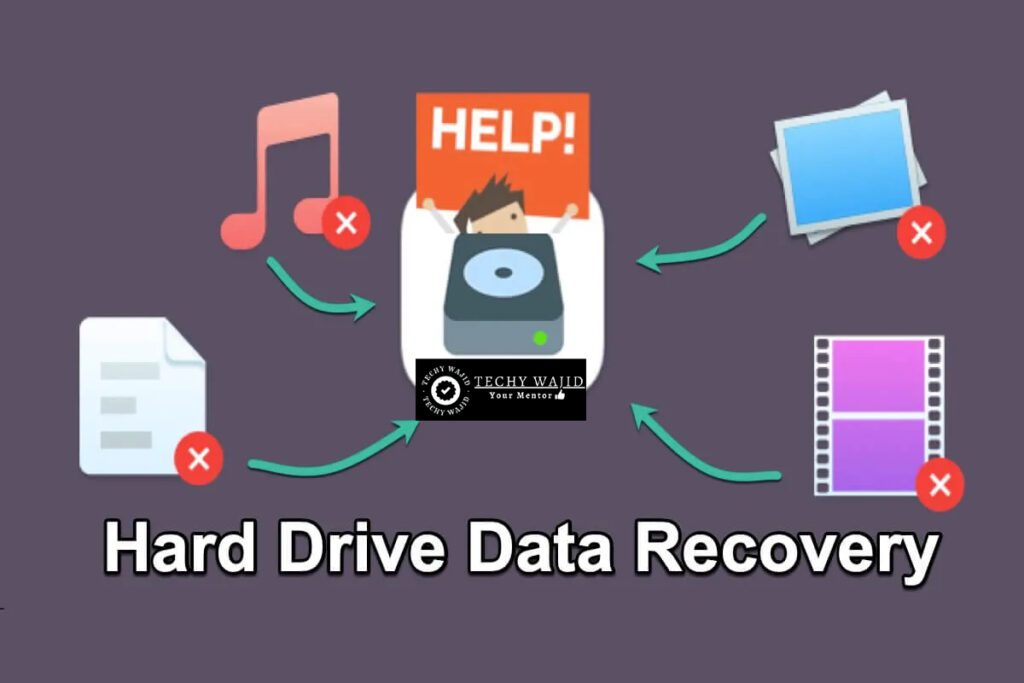Hello Friends, once again welcome to your very amazing & helpful blog, this is the problem which can be occurs to anyone “DATA LOST” whether it is Phone, Pen-drive, External Hard drive, Internal Hard drive, Memory Cards, Etc. Wherever you have saved your data, if your data gets lost or deleted from the external drive, you become very worried, because the data you have saved is very useful.
This issue is linked to the challenge of finding numerous free software options, yet none seem capable of fully recovering our data. In some cases, recovery becomes impossible, leaving those unfamiliar with software usage in a frustrating predicament, struggling without a solution
& you don’t even know who is the trusted person available in the market to do paid data recovery & there are some companies among them who do paid data recovery but they check the device first & we There is also a charge for checking which is non-refundable.
In such a situation, how can we get our data properly checked at minimum charges & without any initial checking charges & then once it is confirmed that the data can be recovered then we can get it recovered at minimum charges.
So this blog has all the problem related solutions, if you also have any problem related to data recovery then you can contact out team at techywajid@gmail.com or you can also contact us by visiting the contact us page of the website, our team will help you completely if your data can be recovered but only minimum charges will be taken otherwise no charges will be taken and initial device checking will be done absolutely free.
There are many reasons for data loss, if you also want to know today then this blog has very helpful content written about DATA & DATA LOST.

Introduction
In today fast paced digital age, data has emerged as the life blood of our inter-connected world. It’s significance can’t be overstated touching every aspect of our lives from personal communication to business operations. Imagine the countless photos and memories stored on our smart phones, the critical documents for our work, & the intricate web of information that keeps businesses running smoothly. Data is not merely a collection of numbers & files; it is the foundation upon which our modern society.
However, the convenience & accessibility that data brings, there looms a pressing concern: data security. The digital realm is not without its dangers, & the potential risks of data loss are ever present. The problem arises when we search for various free software alternatives, but none of them prove effective in completely restoring our data. At times the recovery process seems hopeless leaving individuals who lack expertise in software handling feeling utterly stuck grappling without a viable resolution. It can disrupt our personal lives causing emotional distress & for businesses, it can lead to financial losses & damage to reputation.
Let’s delve into a situation that resonates with most of us, either through personal experience or anticipation, to grasp the relevance of this matter, Imagine spending hours meticulously creating a presentation for an important meeting. You have poured your creativity & expertise into it, believing it to be safe on your computer. Suddenly, due to an unexpected software glitch, the file becomes corrupted, rendering all your hard work inaccessible. The frustration & helplessness in such a situation are emotions that resonate with many of us. It’s in these moments of vulnerability that the true importance of data & its recovery becomes apparent.
In the pages that follow, we will delve into the depths of data – understanding its forms, recognizing the myriad causes of data loss, exploring effective recovery techniques, & discovering valuable tips & best practices to safeguard our digital treasures. Together, we will navigate the complex landscape of data security & recovery, empowering ourselves with knowledge that is essential in our data driven world.

Data: A Fundamental Building Block:
- Data refers to raw, unprocessed information that can be in the form of numbers, words, images, or multimedia files.
- It serves as the foundation for all digital activities, from browsing the internet to creating documents & sharing pictures.
Types of Data:
- Structured Data: This type of data is highly organized, making it easy to search & process. It often fits neatly into databases & spreadsheets, like contact information or transaction records.
- Unstructured Data: Unstructured data lacks a predefined structure & can be more challenging to manage. Examples include social media posts, emails, & multimedia files.
Sources of Data:
- Human Input: Data is generated by human input through various interactions with digital devices, such as typing text, clicking photos, or recording videos.
- Sensors & Devices: Smartphones, sensors, & Iot devices constantly collect data from the environment, like weather conditions or health metrics.
Importance of Data:
- Informed Decision-Making: Businesses use data to analyze customer behavior, market trends, & financial patterns, enabling informed decision-making.
- Personal Convenience: Data powers everyday conveniences like online shopping recommendations, traffic updates, & personalized content on social media platforms.
Challenges in Handling Data:
- Data Overload: The sheer volume of data generated daily can be overwhelming, making it challenging to sift through & extract meaningful insights.
- Data Security: Protecting data from unauthorized access, cyber threats, & breaches is a critical concern in today’s digital landscape.
Role of Data in Digital India:
- Government Initiatives: In India, data plays a pivotal role in initiatives like Digital India, fostering technological advancement & digital literacy among citizens.
- Economic Growth: Data-driven innovations contribute significantly to economic growth, creating job opportunities & enhancing various sectors like healthcare & education.

Causes of Data Loss in Simple Words
Data loss can strike when you least expect it, causing frustration & anxiety. Understanding the causes is the first step toward protecting your valuable information. Let’s explore the common culprits behind data loss in a straightforward manner:
Human Errors:
- Simple Mistakes: Often, data loss occurs due to accidental deletion of files or formatting the wrong drive. These innocent errors can erase crucial data instantly.
- Lack of Awareness: Inadequate knowledge about data handling can lead to unintentional data loss. For instance, mishandling external drives or improper shutdowns can corrupt files.
Hardware & Software Failures:
- Hard Drive Failures: The hard drive, your data’s home, can fail due to wear & tear, manufacturing defects, or physical damage. When it fails, data stored within becomes inaccessible.
- Software Glitches: Bugs in software can cause sudden crashes, leading to data loss. It’s like losing your work when your computer unexpectedly restarts without saving.
Cyber security Threats:
- Viruses & Malware: Malicious software like viruses & malware can corrupt or delete your files. They often sneak into your system through suspicious email attachments or unsecure websites.
- Phishing Scams: Cyber criminals use phishing emails or messages to trick you into revealing sensitive information, leading to unauthorized access & potential data theft.
Natural Disasters & Physical Damage:
- Floods & Fires: Natural disasters like floods & fires can destroy electronic devices, including computers & servers, causing irreversible data loss.
- Physical Damage: Dropping your laptop or spilling liquids on your device can damage the internal components, rendering your data irretrievable.
Outdated Technology:
- Obsolete Devices: Using outdated hardware or software might lead to compatibility issues, making it difficult to access or recover data.
- Unsupported File Formats: Newer file formats might not be compatible with older software versions, leading to the corruption of files during the conversion process.

Data Recovery Techniques
Backup Strategies
- Backup strategies are an essential part of data recovery. Regularly backing up your data is like creating a safety net for your valuable information. Cloud services like Google Drive, Dropbox, & OneDrive offer convenient options for automatic backups. By following a consistent backup routine, you can minimize the impact of data loss & easily restore your files if the need arises.
Data Recovery Software
- Data recovery software tools are your go-to solution when you accidentally delete or lose data from your storage devices. These user-friendly programs are designed to scan your storage media for recoverable files. Notable software options include Recuva, EaseUS, Data Recovery Wizard, & Disk Drill. For optimal utilization of these tools adhere to the software’s provided step by step guidelines and choose the suitable recovery mode. It is crucial to note that the timelier you employ data recovery software following a data loss incident, the higher your likelihood of achieving a successful recovery outcome.
Seeking Professional Help
- In some cases, data loss situations can be complex & require the expertise of professional data recovery services. If your data loss is due to physical damage to the storage device or severe corruption, it’s advisable to consult a data recovery specialist. These experts have specialized equipment & techniques to recover data from damaged hard drives, solid-state drives (SSDs), & other storage media. When choosing a data recovery service provider, ensure they have a good track record & can guarantee the security of your data throughout the recovery process.

Data Recovery Tips & Best Practices
Whether it’s precious family photos, vital work documents, or sensitive financial information, our data is invaluable. Nevertheless, the online domain is fraught with its share of dangers. Data loss might result from an array of causes, ranging from hardware breakdowns and cyber assaults to human mistakes. To help you safeguard your digital assets & navigate the complexities of data recovery, here are some essential tips & best practices:
Regular Backups: It’s often said, “Prevention is better than cure.” Regularly backing up your data is the best preventive measure against data loss. Utilize cloud storage services or external hard drives to store copies of your important files & documents.
Update Software & Operating Systems: Software updates aren’t just about introducing new features; they often contain crucial security patches. Hackers exploit vulnerabilities in outdated software. Regularly updating your operating system & applications ensures that you are protected against the latest threats & vulnerabilities.
Install Reliable Antivirus Software: Antivirus software acts as a shield against malicious software & cyber threats. Install a antivirus program and keep it up to date. Regular scans of your system can detect & remove potential threats before they harm your data.
Use Strong & Unique Passwords: Weak passwords are an open invitation to hackers. Create strong passwords that combine letters, numbers, & symbols. Avoid using easily guessable information like birthdays or names. Additionally, use different passwords for different accounts. This way, even if one password is compromised, your other accounts remain safe.
Exercise Caution with Emails: Phishing attempts often happen through email attachments & links. Be cautious when opening attachments or clicking on links, especially if the sender is unknown or the email seems suspicious. Cybercriminals often use email as a medium to deliver malware, so verify the sender’s authenticity before taking any action.
Educate Yourself & Others: Knowledge is your best defense against cyber threats. Regular training sessions can create a vigilant online community that is less susceptible to scams & attacks.
This plan should outline the steps to be taken in the event of data loss, including who to contact & which recovery tools to use. Regularly update & test your recovery plan to ensure its effectiveness.
Regular Security Audits: Conduct regular security audits of your systems & networks. These audits can identify vulnerabilities that hackers might exploit. By addressing these vulnerabilities promptly, you minimize the risk of data breaches & unauthorized access.
Backup Your Recovery Plan: Just like your data, your recovery plan should also be backed up. Store it in a secure location separate from your primary systems. Having a backup of your recovery plan ensures that you can access it even if your main systems are compromised.
Final Conclusion and Best Tip
Friends, this was about data recovery but the most important thing is that whenever you lose data, you should not try to recover it by yourself again and again, because as many times as you try on free or paid software, it fails. The possibility of device data recovery seems to be decreasing. If you want any help with out team so, you can simply contact with out contact us page or drom a mail on techywajid@gmail.com. Rest assured, our team will promptly respond to your inquiry, and we are more than delighted to assist you.
FEW WEBSITES FOR FREELANCERS

FREELANCER SITE
REMOTASK SITE
UPWORK SITE
FIVERR SITE
IMPORTANT LINKS FOR YOU
(Must See)


Hi,
techywajid.com
I was just browsing your website and I came up with a great plan to re-develop your website using the latest technology to generate additional revenue and beat your opponents. (techywajid.com)
I’m an excellent web developer capable of almost anything you can come up with, and my costs are affordable for nearly everyone.
Kindly share your whatsapp or skype for furhter communication.
Thanks in advance,
Nishant Sharma (Business Development Executive)